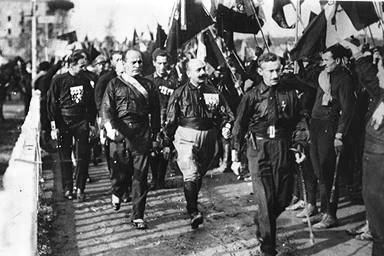The March on Rome
The March on Rome, which took place in 1922, came about as part of a drive to establish Mussolini and his Fascist Party as the key political party in Italy. Mussolini had warned of the march, saying: “Either the Government will be given to us or we shall seize it by marching on Rome.”
The leader of the Fascist Party in Italy, Benito Amilcare Andrea Mussolini, was desperate to ensure that his party was the most important in the country and aimed to do so by holding a March on Rome in 1922. The march had been talked of following the merging of the fascist parties of Italy in November 1921, which created the official political party, the Fascist Party. In the party’s conference in October of 1922, Mussolini said: “Either the Government will be given to us or we shall seize it by marching on Rome.”
Along with senior members of the Party, Mussolini planned how this march would play out. Firstly, fascists from all across the country would travel to Rome, and every key public building would be taken over, including those in certain cities outside of Rome.

Mussolini would force the Government to resign, in order that his party be allowed to take over the running of the country. If the existing Government failed to agree to move aside to make way for the Fascist party, armed fascists in Rome would march in and force them to do so.
Mussolini’s plan was seen as many as being implausible as the Fascists would be vastly outnumbered by the military in Rome who would be supporting the existing Government. The other issue was that many of the armed Fascists who arrived in Rome were not experienced in fighting and only had farm tools with them – hardly ideal if trying to seize power.
However, Mussolini and his party believed that Facta’s Italian Government – and the King, Victor Emmanuel – were keen to avoid any sort of conflict after Italy had been such a victim in World War One. As it happened, Facta was keen to go against Mussolini and what he was trying to do, but the King behaved as Mussolini had thought he would, in that he wanted to avoid any conflict as he was worried it may result in civil war. The King also knew that the Duke of Aosta, who was his cousin, was an ardent Fascist supporter and that he may replace him if the King’s fight against Mussolini were to fail. As a result of these factors, Mussolini was asked to meet the King on 29 October 1922, and on 30 October was sworn in as Prime Minister of Italy. Following this, the Fascists marched in triumph through Rome.
See also: Mussolini's Dictatorship
MLA Citation/Reference
"The March on Rome". HistoryLearning.com. 2024. Web.
